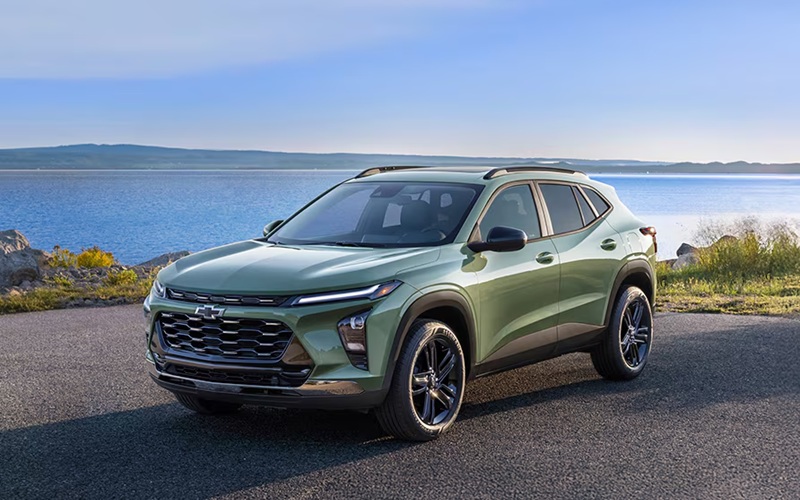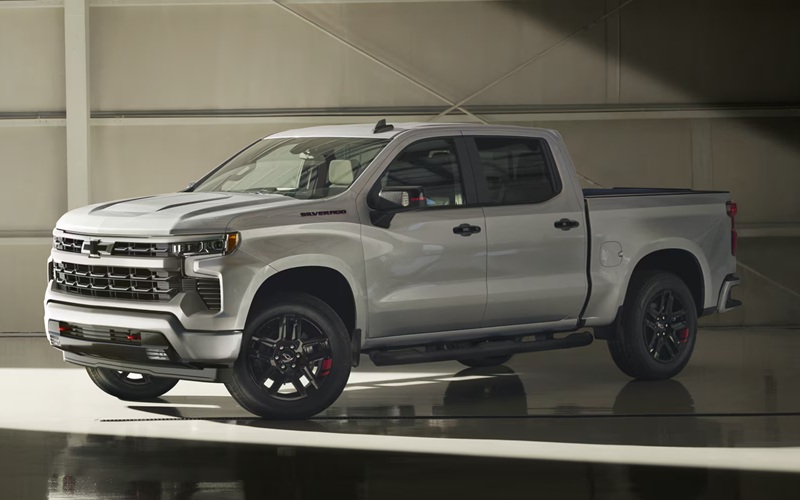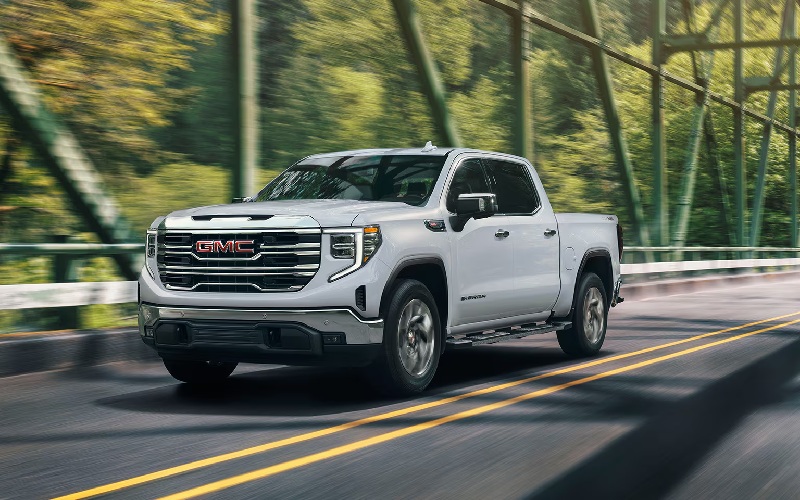GMC Sierra 1500 vs Electric Model: The Future of Trucks
The Evolution of the Sierra 1500: Two Paths Forward The pickup truck landscape continues to evolve rapidly. While traditional internal combustion engines have dominated for decades, electric powertrains now present a compelling alternative. The traditional Sierra 1500 lineup has earned its reputation through years of refinement, while the new Sierra EV represents a bold step […]
The Evolution of the Sierra 1500: Two Paths Forward
The pickup truck landscape continues to evolve rapidly. While traditional internal combustion engines have dominated for decades, electric powertrains now present a compelling alternative. The traditional Sierra 1500 lineup has earned its reputation through years of refinement, while the new Sierra EV represents a bold step into the future.

Performance Metrics: Power and Capability
Traditional Sierra 1500 Powertrain Options
The current Sierra 1500 lineup offers impressive versatility with multiple powertrain options:
- The 2.7L TurboMax four-cylinder generates 310 horsepower and 430 Nm of torque
- The iconic 5.3L V8 delivers 355 horsepower and 519 Nm of torque
- The potent 6.2L V8 produces 420 horsepower and 624 Nm of torque
- The Duramax 3.0L diesel provides 305 horsepower and 624 Nm of torque
Each engine connects to a 10-speed automatic transmission, offering a balance of power and efficiency. The 6.2L V8 achieves 0-100 km/h acceleration in approximately 5.4 seconds, impressive for a full-size truck.
Sierra EV: Instant Torque Revolution

The Sierra EV Denali Edition 1 completely transforms performance expectations with:
- Dual-motor electric drivetrain delivering 754 horsepower and 1,063 Nm of torque
- 0-100 km/h acceleration in approximately 4.5 seconds
- Standard all-wheel drive through GM’s Ultium platform
The immediate torque delivery creates a driving experience that is fundamentally different from that of traditional trucks. The Sierra EV accelerates with sports car-like intensity, despite its substantial size and weight.
Range and Refuelling: Different Approaches to Mobility
Traditional Sierra 1500: Proven Flexibility
The traditional Sierra 1500 offers familiar advantages:
- Fuel tank capacity of 91 litres (extended range tanks available)
- The 3.0L Duramax diesel achieves approximately 8.4 L/100 km on highways
- Refuelling takes approximately 5 minutes at thousands of stations
- Driving range varies between 700-1,000 km depending on configuration and conditions
This established infrastructure provides peace of mind for long journeys, remote work sites, and spontaneous travel.
Sierra EV: New Capabilities, New Considerations
The Sierra EV introduces different metrics to consider:
- Extended Range models offer up to 628 km of range
- Max Range versions push this further to 740 km
- DC fast-charging can add 160 km of range in approximately 10 minutes
- Level 2 home charging (11.5 kW) can fully recharge overnight
The range capabilities exceed what many expected from an electric truck, though planning remains more critical than with traditional models.
Towing and Payload: Core Truck Capabilities
Traditional Sierra 1500: Proven Performance
The traditional Sierra 1500 maintains its working credentials with:
- Maximum towing capacity up to 5,897 kg (properly equipped)
- Payload capacity up to 1,021 kg
- Available integrated trailer brake controller
- ProGrade trailering system with up to 14 camera views
These capabilities reflect decades of refinement in truck engineering.
Sierra EV: Maintaining Capability
The Sierra EV maintains substantial capability despite the battery weight:
- Towing capacity rated at 4,309 kg
- Maximum payload of approximately 590 kg
- Maintains trailer technology features from traditional models
- Innovative features like crab walk for improved maneuverability
While the traditional models maintain an edge in raw towing capacity, the Sierra EVs instant torque provides confident towing performance within its limits.
Off-Road Capability: Tackling Challenging Terrain
Traditional Sierra AT4: Purpose-Built for Adventure
The AT4 trim level provides purpose-built off-road capability:
- Factory 5 cm lift
- Rancho monotube shocks
- Skid plates and red recovery hooks
- Electronic locking rear differential
- Available Goodyear Wrangler Territory all-terrain tires
This proven package handles everything from forest service roads to moderate trail work.
Sierra EV AT4: Electrified Adventure
The upcoming Sierra EV AT4 (scheduled for late 2025) reimagines off-road capability:
- Air suspension with adjustable ride height
- CrabWalk functionality for difficult obstacles
- Instant torque delivery is beneficial for technical terrain
- Enhanced underbody protection for battery systems
- Available 35-inch all-terrain tires
The electric architecture creates new possibilities for off-road control, though the traditional AT4 maintains advantages in simplicity and proven performance.
Practical Considerations: Daily Life With Each Truck
Interior Space and Technology
Both trucks offer premium accommodations, but with different emphases:
Traditional Sierra:
- Available Super Cruise hands-free driving on over 300,000 km of compatible roads
- 13.4-inch center touchscreen
- Multiple trim levels from work-focused to luxury
- Traditional gauge cluster with optional digital elements
Sierra EV:
- Standard Super Cruise
- 16.8-inch vertical touchscreen
- Fixed Glass Roof creating an open atmosphere
- Fully digital 11-inch driver information center
- PowerBase power station functionality
The Sierra EV places a greater emphasis on technology integration, while the traditional Sierra offers a wider range of trim and equipment levels.
Storage Solutions
Traditional Sierra:
- Multiple bed lengths (1,781 mm, 1,981 mm, 2,438 mm)
- Standard cargo tie-downs
- Available MultiPro tailgate with six functions
- Conventional frunk storage
Sierra EV:
- Single bed length (1,803 mm)
- eTrunk front storage compartment (290 litres)
- MultiPro Midgate expanding cargo length to 3,302 mm
- Power Station Pro with 10.2 kW of power for tools and equipment
The Sierra EV innovates with its MultiPro Midgate and extensive power export capabilities, while the traditional Sierra offers more configuration options.
Maintenance and Ownership Experience
Traditional Sierra 1500
The conventional ownership experience includes:
- Oil changes every 12,000 km (varies by engine)
- Transmission fluid changes approximately every 72,000 km
- Regular brake service and component inspections
- Fuel system maintenance
- Extensive dealer network for servicing
This familiar maintenance schedule represents a known quantity for truck owners.
Sierra EV
The electric ownership experience differs substantially:
- No oil changes or transmission maintenance
- Reduced brake wear through regenerative braking
- Battery warranted for 8 years/160,000 km
- Over-the-air updates for software improvements
- Longer service intervals for many components
The Sierra EV significantly reduces routine maintenance requirements, potentially saving substantial time and maintenance costs.
Environmental Considerations
Emissions Profile
The environmental impact differs significantly:
Traditional Sierra:
- Direct tailpipe emissions
- Upstream emissions from fuel production and distribution
- Lifecycle emissions tied to both manufacturing and operation
Sierra EV:
- Zero tailpipe emissions
- Upstream emissions dependent on electricity generation mix
- Higher manufacturing emissions offset by operational advantages
The environmental advantage of the Sierra EV grows in regions with cleaner electricity generation and with longer vehicle ownership periods.
The Verdict: Which Sierra 1500 Represents the Better Choice?
The “better” choice depends entirely on individual needs, usage patterns, and values:
Choose the Traditional Sierra 1500 if:
- Maximum towing and payload capacity are critical
- Your driving regularly exceeds 700 km between convenient stopping points
- You frequently travel to remote areas with limited charging infrastructure
- You prefer the familiar ownership experience of internal combustion
Choose the Sierra EV if:
- Daily driving typically falls within 400 km round-trip
- You value the convenience of home charging and reduced maintenance
- Performance and acceleration are priorities
- You have access to reliable charging for occasional longer trips
- You prioritize reduced emissions and operating costs
Both represent compelling options. The traditional Sierra 1500 offers proven capability with incremental improvements, while the Sierra EV represents a fundamentally different approach to truck ownership that will appeal to many forward-looking buyers.
The ideal scenario for many might involve a transition period where both powertrain types serve in different roles—perhaps an electric truck for daily use, paired with a traditional truck for specific, heavy-duty, or remote applications. As charging infrastructure continues to expand, the compromises required by electric truck ownership will continue to diminish.
What remains clear is that the Sierra nameplate continues to evolve in multiple directions, ensuring relevant options for a diverse range of truck owners with different needs and priorities.



